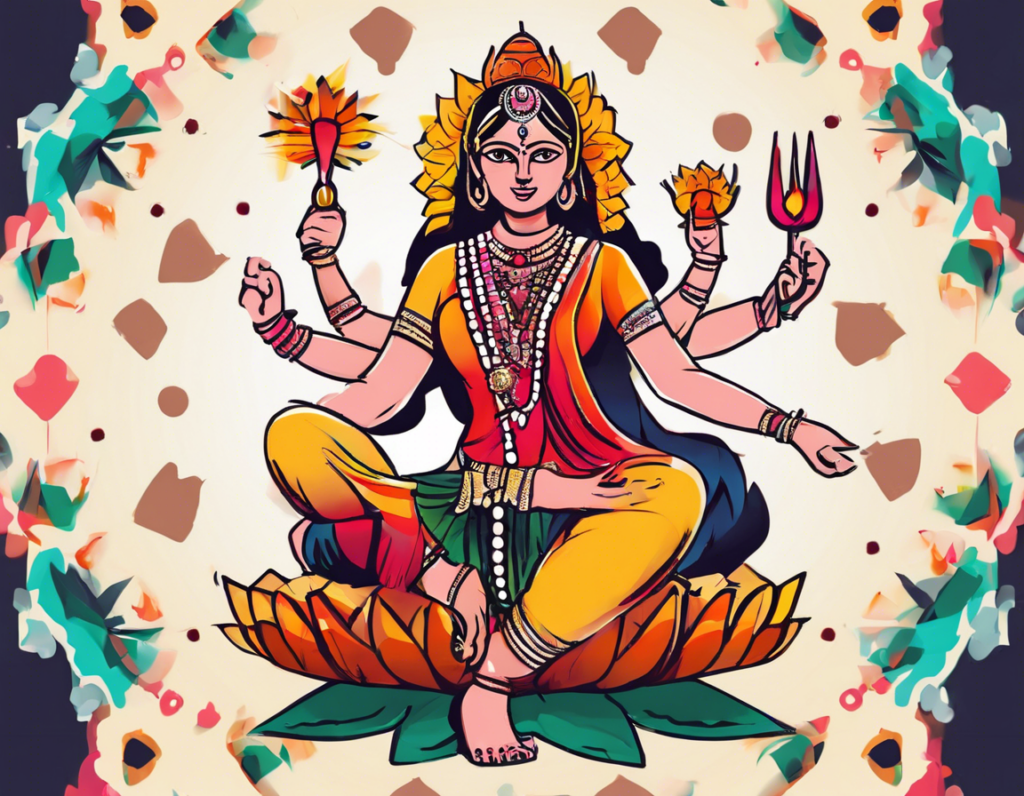Navratri, a vibrant and festive time celebrated across India with great zeal and enthusiasm, holds immense significance in the Hindu culture. This nine-night festival honors the divine feminine energy and is dedicated to Goddess Durga and her various forms. Navratri typically falls in the months of September or October and is observed with a blend of traditional rituals, colorful decorations, lively music, and energetic dance forms like Garba and Dandiya.
The Origins of Navratri
Navratri, which literally translates to ‘nine nights’ in Sanskrit, is rooted in ancient Hindu mythology and is believed to symbolize the victory of good over evil. According to legends, Goddess Durga fought the demon Mahishasura for nine days and nights before ultimately defeating him on the tenth day, known as Vijayadashami or Dussehra. This triumph signifies the eradication of negative forces and the establishment of righteousness.
The Significance of Navratri Celebrations
Navratri celebrations are a time for spiritual reflection, devotional singing, fasting, and cultural performances. Each day of the festival is associated with a different form of Goddess Durga, known as Navadurga, and devotees offer prayers, perform aarti (ritual of worship with light), and partake in community gatherings.
The Colors of Navratri
Each day of Navratri is assigned a specific color that devotees wear to honor the different forms of Goddess Durga:
- Day 1: Grey – Shailputri (Daughter of the Mountains)
- Day 2: Orange – Brahmacharini (The Unmarried Form)
- Day 3: White – Chandraghanta (Symbol of Peace and Serenity)
- Day 4: Red – Kushmanda (The Cosmic Egg)
- Day 5: Royal Blue – Skandamata (Mother of Skanda/Kartikeya)
- Day 6: Yellow – Katyayani (Goddess of Strength)
- Day 7: Green – Kalaratri (The Dark Night)
- Day 8: Peacock Green – Mahagauri (Symbol of Intelligence and peace)
- Day 9: Purple – Siddhidhatri (Granter of Desires)
Rituals and Traditions of Navratri
Fasting
Fasting during Navratri is a common practice observed by many devotees, wherein they abstain from consuming grains, onion, garlic, and non-vegetarian food. Instead, they opt for fruits, milk, and specific foods like sama rice, kuttu ki puri, and sabudana khichdi. The fasting period is believed to purify the body and mind and enhance spiritual practices.
Garba and Dandiya
One of the most anticipated aspects of Navratri celebrations is the energetic and colorful dance forms of Garba and Dandiya. People dress in traditional attire, form circles, and dance to rhythmic beats with colorful sticks in hand. The foot-tapping music and vibrant ambiance create a festive atmosphere that unites people in joy and celebration.
Golu/Doll Display
In South India, Navratri is celebrated as Golu, where dolls and figurines depicting deities, historical events, and daily life scenes are displayed on steps or shelves. This tradition symbolizes the divine presence in every aspect of life and fosters creativity in arranging the display.
Navratri Puja Vidhi (Worship Procedure)
Day 1-3: Kalash Sthapana
The first three days involve Kalash Sthapana, wherein a pot filled with water is placed symbolizing the presence of the divine energy. Goddess Shailputri, Brahmacharini, and Chandraghanta are worshipped during these days.
Day 4-6: Chanting Mantras
On the following three days, devotees chant mantras dedicated to Goddess Kushmanda, Skandamata, and Katyayani to seek their blessings.
Day 7-9: Kanya Pujan
The last three days involve Kanya Pujan, where nine young girls symbolizing the nine forms of Goddess Durga are worshipped, fed, and offered gifts. This ritual embodies the belief that young girls possess the divine energy of the goddess herself.
FAQ – Frequently Asked Questions
1. What is the significance of Garba and Dandiya during Navratri?
Garba and Dandiya are traditional dance forms performed during Navratri to honor Goddess Durga. Garba involves circular movements representing the cyclical nature of life, while Dandiya is a lively dance using sticks that depict the playfulness of the divine energy.
2. How can one participate in Navratri celebrations if they are unable to attend community events?
One can observe Navratri by setting up a small shrine at home, offering prayers, lighting diyas, and listening to devotional songs. Additionally, virtual participation in online events and live streaming of Garba performances can also help engage in the festive spirit.
3. Are there any specific food items that are recommended during Navratri fasting?
During Navratri fasting, devotees typically consume fruits, milk, nuts, sama rice, kuttu ki puri, sabudana khichdi, and potato dishes. These ingredients are considered sattvic and are believed to be pure and conducive to spiritual practices.
4. How is Navratri celebrated in different parts of India?
While Garba and Dandiya are prominent in states like Gujarat and Maharashtra, Durga Puja with intricate pandal decorations takes center stage in West Bengal. In South India, Golu displays and Bommai Kolu are the highlights of Navratri celebrations.
5. What is the significance of the Navami Havan on the ninth day of Navratri?
Navami Havan is a sacred fire ritual performed on the ninth day of Navratri to honor Goddess Siddhidhatri. Devotees offer ghee, grains, and sacred herbs into the fire while chanting mantras to seek blessings for success, fulfillment of desires, and prosperity.
Conclusion
Navratri is not just a festival; it is a spiritual journey that invokes devotion, celebrates cultural diversity, and spreads joy and positivity. By immersing oneself in the colorful traditions, uplifting music, and fervent prayers of Navratri, one can experience a deep connection with the divine and a sense of community bonding that transcends boundaries. Whether through fasting, dance, or rituals, Navratri offers a unique opportunity to bask in the glory of Goddess Durga and embrace the victory of light over darkness.
